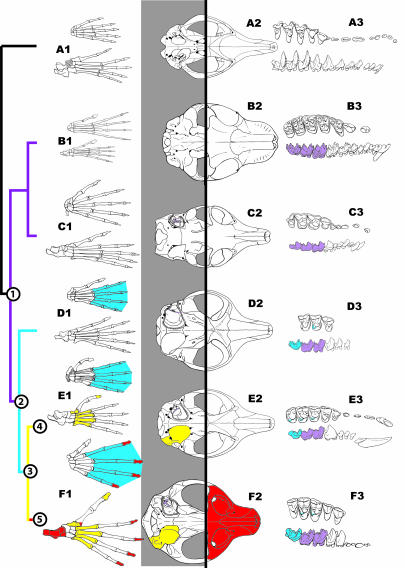Fig. 5.
Hypothesis of character change in euarchontan evolution. Purple: euarchontan features [Node 1: relatively low crowned molars, entotympanic contribution to the auditory bulla (character 83)]; Blue: primate features [Node 2: increased length of M3 and enlarged M3 hypoconulid (characters 62, 69); presence of a postprotocingulum on the upper molars (character 71); elongate manual phalanges (character 172)]; yellow: euprimateform features [Node 3: relatively short metatarsals, a nail on the hallux (character 129); a petrosal bulla (character 83)]; red: euprimate features [Node 5: elongate tarsals (characters 134, 137); enlarged peroneal process on first metatarsal (character 159); nails on all digits (character 156); forward-facing orbits with a short snout (character 91)]. A, Eutherian Asioryctes; B, Dermopterans Elpidophorus (teeth: B3) and Cynocephalus (cranium and postcrania: B2, B1); C, Scandentian Ptilocercus; D, Primates Purgatorius (teeth: D3), Ignacius (cranium: D2), and D. szalayi (postcrania: D1); E, Plesiadapoids Chronolestes (teeth: E3) and Carpolestes (cranium and postcrania: E2, E1); F, Euprimates Altanius (teeth: F3) and Notharctus (cranium and postcrania: F2, F1).

